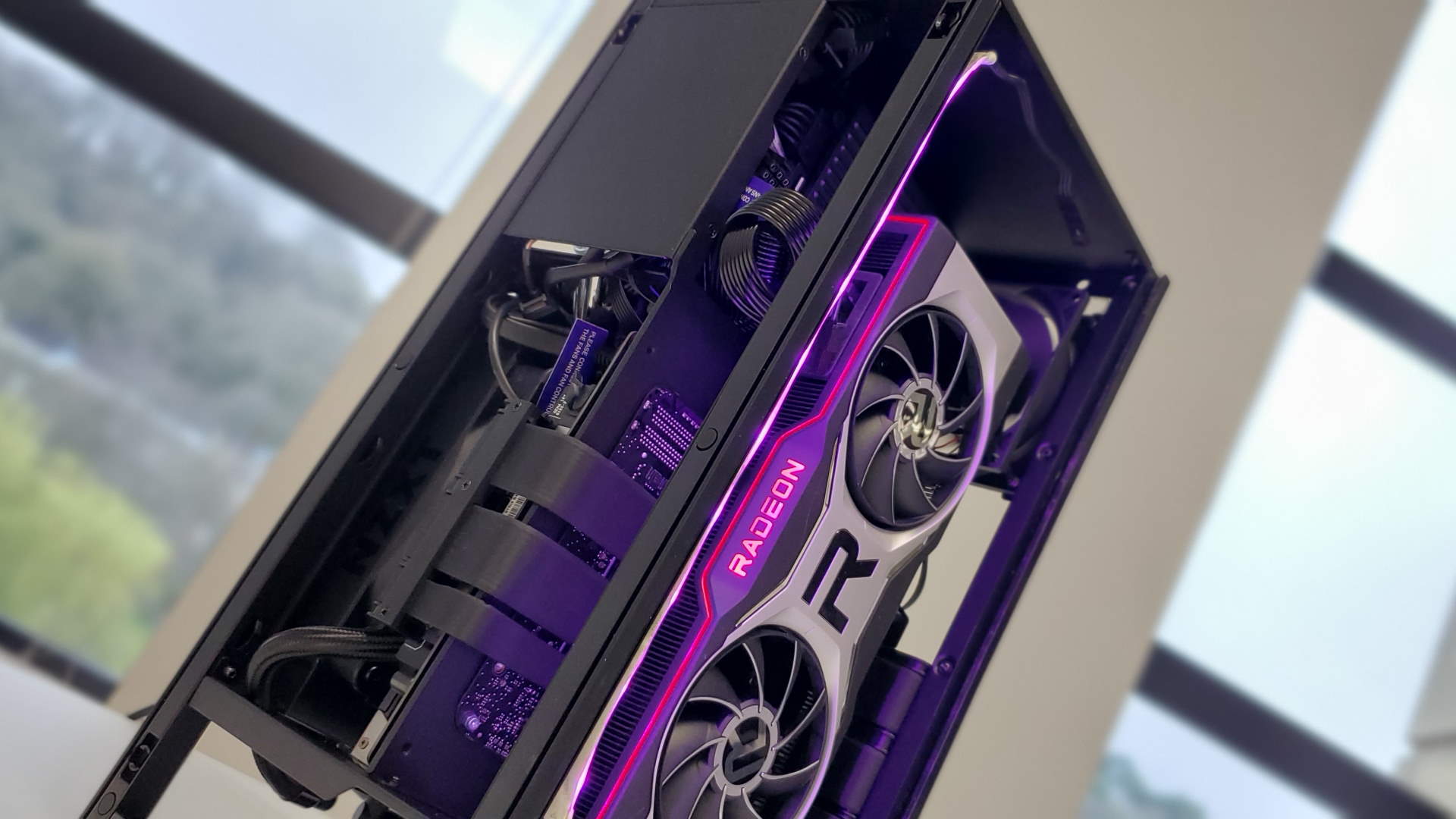Our Verdict
It's a lot of money if you're thinking about it as just a chassis, but with a bundled 750W PSU, liquid cooling, and routed cabling, it's your best bet for a quality minimal fuss, mini-ITX gaming PC build.
For
- Great to build into
- Extra cooling
- Routed cabling is a blessing
Against
- Doesn't support tall RAM modules
PC Gamer's got your back
I was a big fan of the original NZXT H1 mini-ITX chassis when it first came out. But then, mine never caught fire, which is a good thing because I've been using it as the basis for my office work machine ever since. My boss would not have been pleased if I'd burned down the PC Gamer offices because of a faulty PCIe riser cable.
Though that was—eventually—fixed with replacement risers that went out to owners of the chassis who picked one up before NZXT pulled it from sale while it sorted out the issue.
So yeah, there were a few problems with that initial case. Which is a shame because NZXT has been making some of our favourite PC chassis, and still some of the best mini-ITX cases, too. And aside from that specific riser problem, the H1 was a fantastic package to build a wee peecee into. And so is this recently updated version, too.
On the face of it, this H1 V2 looks identical and you'd be forgiven for thinking it was just a new release of the same case with an even more non-burn-y PCIe riser cable for your GPU. But NZXT has actually done a lot to improve the overall design, even though it does make for a more expensive, slightly larger and heavier mini-ITX case.
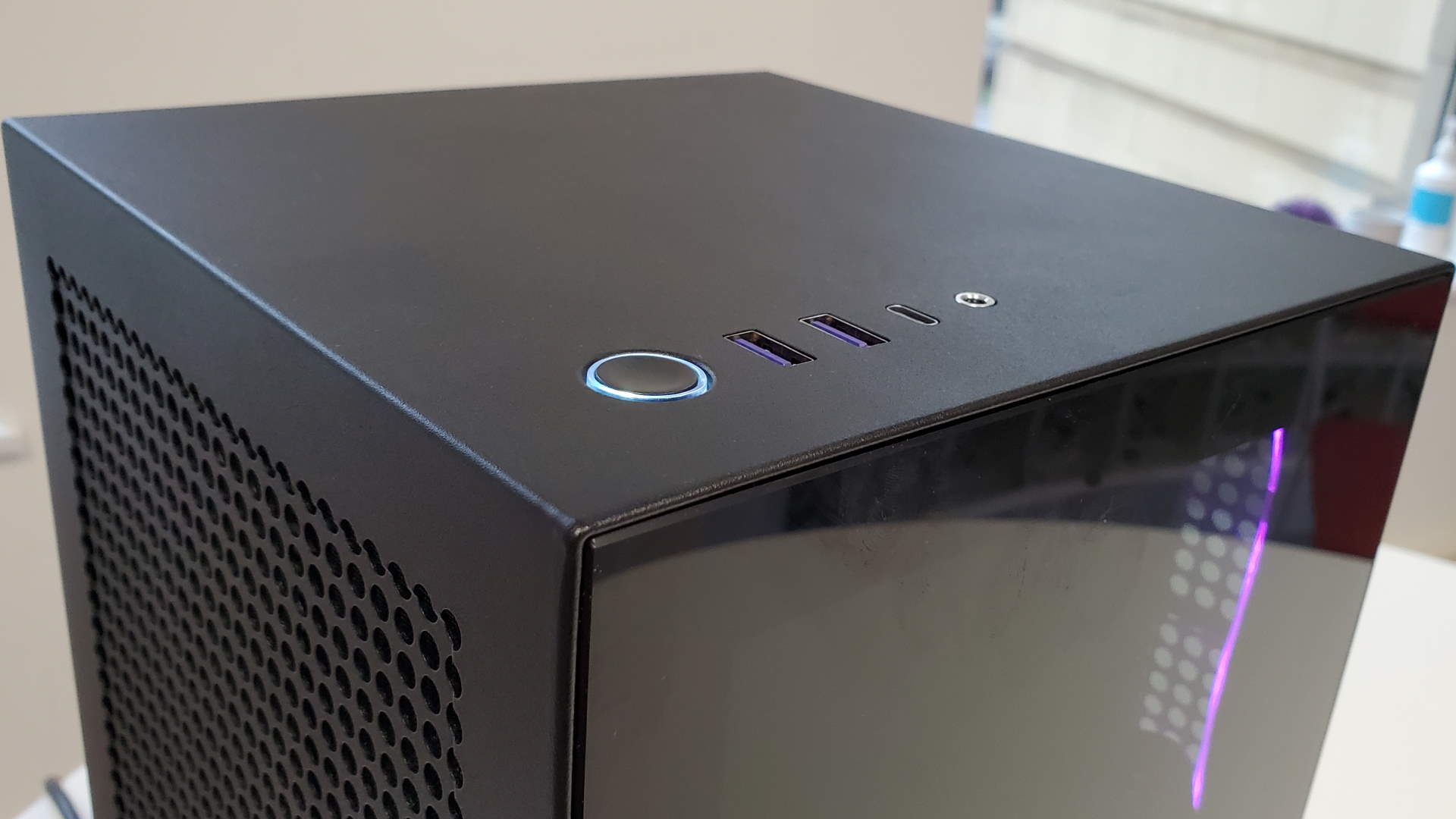
Motherboard support: Mini-ITX
Dimensions: 405 x 196 x 196 mm
Weight: 7.6 kg
GPU clearance: 324 x 58 mm
Memory clearance: 46 mm
Front I/O: 2x USB 3.2 Type-A, 1x USB 3.2 Type-C, 3.5 mm audio jack
PSU: 750W SFX 80 Plus Gold
Cooling: 140 mm AIO CPU cooler, 92 mm rear fan
Riser cable: PCIe 4.0 x16
Warranty: 3 years (case, riser card, AIO), 10 years (PSU)
Price: $400 | £340
The H1 V2 is retailing for another $50 (£40) on top of the $350 (£300) price tag of the original, which maybe feels like a lot, but you are getting more than just a chassis. The real beauty of the H1 is that it includes both a powerful PSU and a liquid CPU cooler, so the really awkward bits of a mini-ITX build are taken care of.
If you've ever built a small form factor PC you will understand the pain of trying to route a million, unnecessarily long PSU cables around the motherboard, graphics card, and everything else. Then trying to mount a capable-enough cooler into the limited confines of a mini-ITX case… well, that's a task in itself.
With NZXT's H1, however, both come preinstalled, with cooling and cabling pre-routed in the optimal way for the case, so you just have to connect it all up. And it's a genuine joy to build into, in a way which other mini-ITX cases generally aren't. Even the Hyte Revolt 3, which almost apes the H1, is a far more fiddly place in which to build a rig. With the cooler lifted up and away there's so much elbow room to work with that dropping the heart of your system into the chassis is simple.
There's a huge cutout on the rear of the motherboard tray, too, which is super handy considering a lot of mini-ITX motherboards use underslung M.2 ports for extra SSD support. And it all makes upgrading and general maintenance a far easier thing. Something that is often a pain point for other ickle cases.
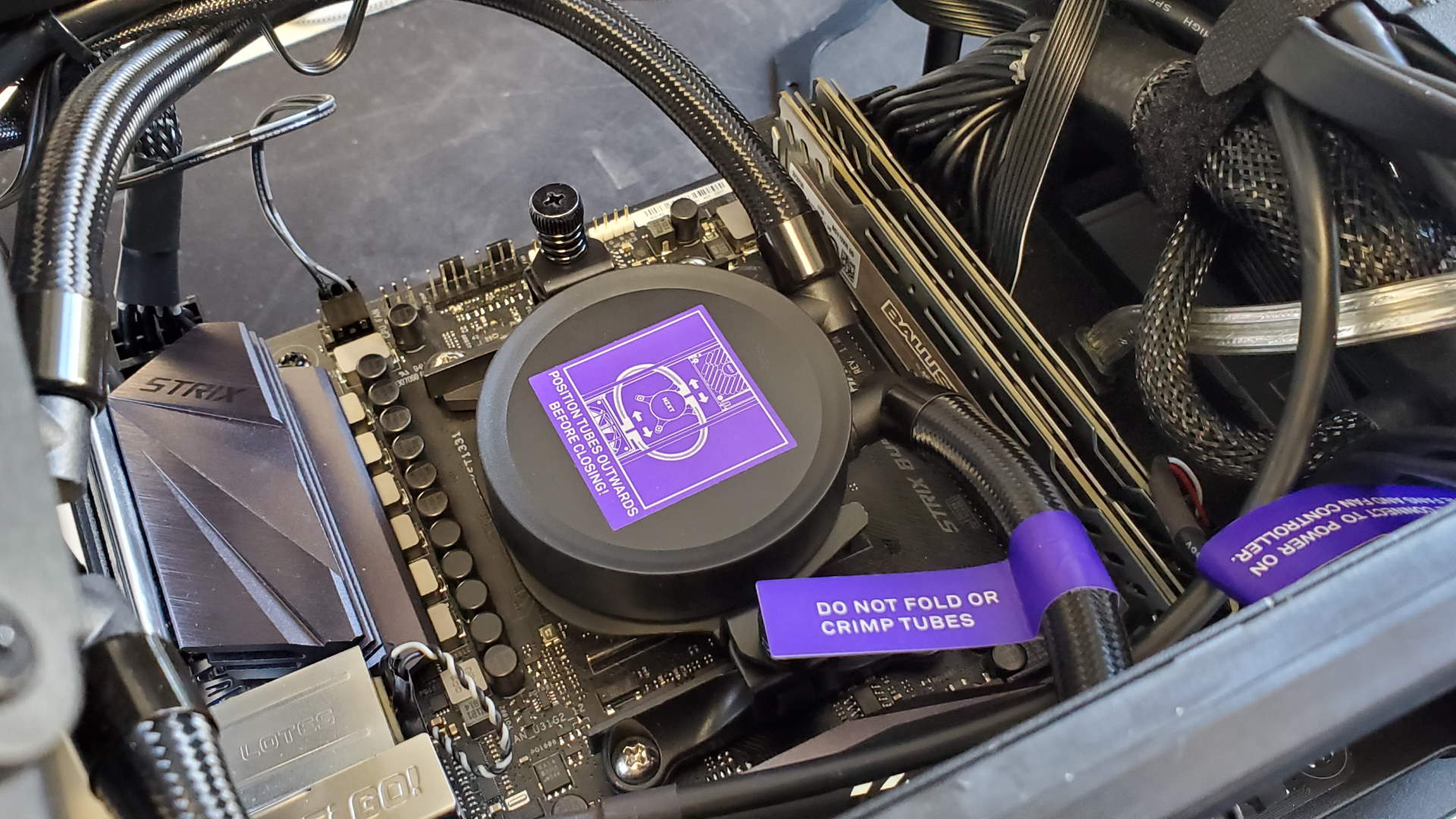
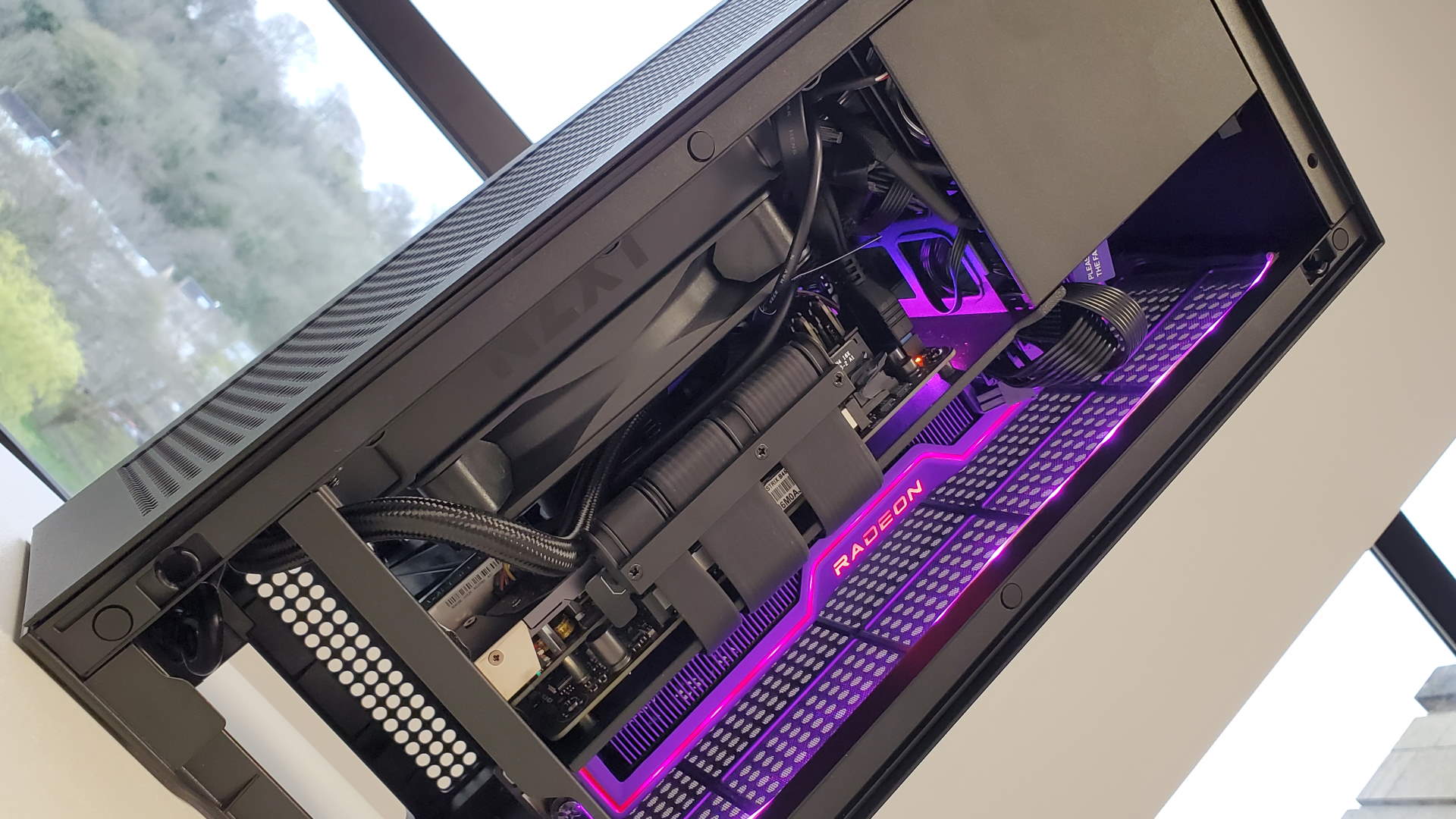
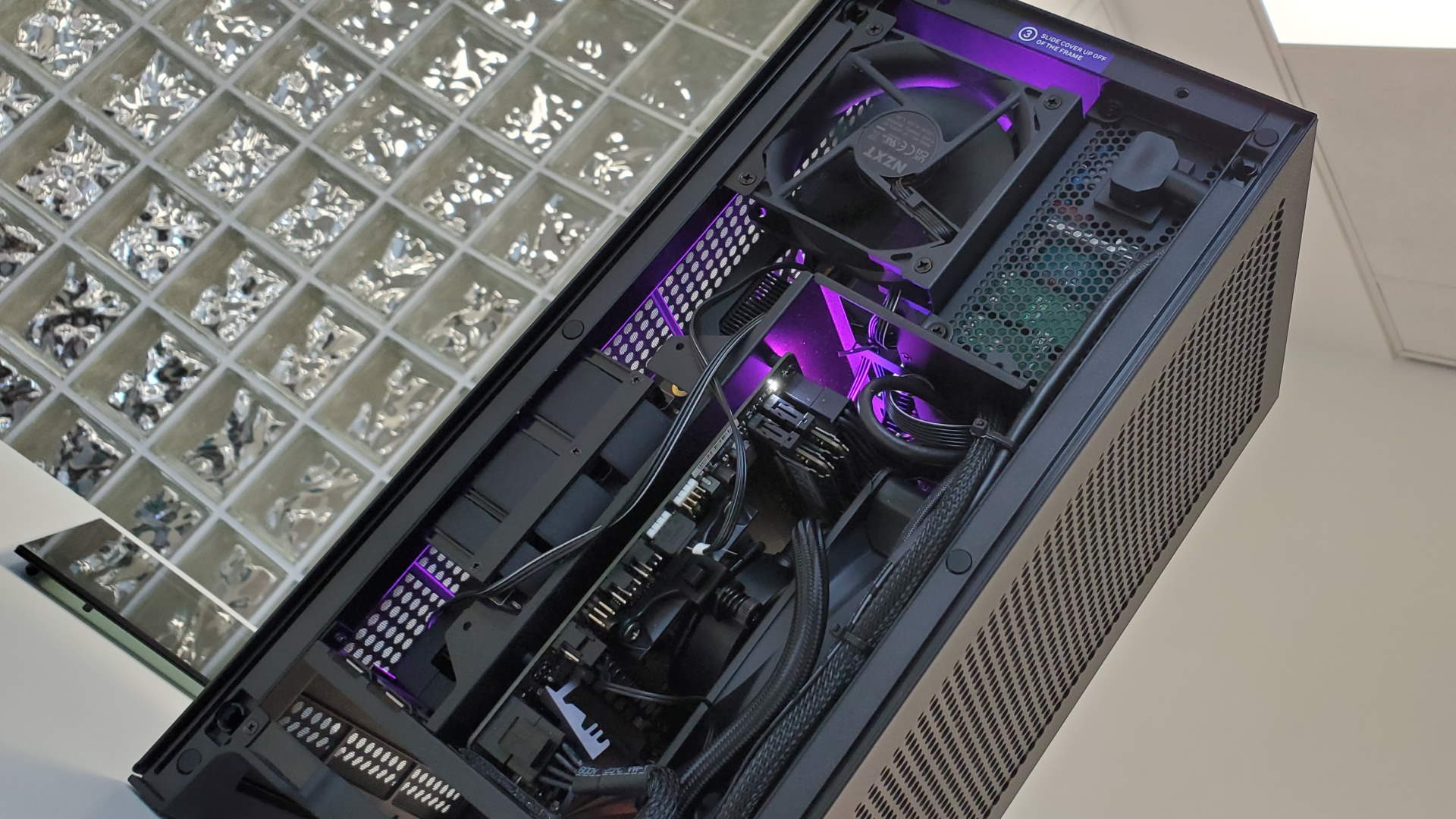
A note of warning, however, and that is the clearance between the radiator fan and the top of your memory isn't huge. It is another 1mm higher than the original, but with just 46mm as your maximum memory height some DIMMs are simply going to be too big. Our Corsair Dominator DDR5 sticks we've used in our Alder Lake test rig, and the mini-ITX B660, proved just too tall to close the case.
NZXT has made many welcome improvements to what was already a very good mini-ITX chassis design
NZXT helps the build process with clear labelling within and without the chassis. I had issues actually getting into the tool-less design of the first H1, but it ships with labelling on the outside explaining how to gain access. And inside there are tags and stickers indicating what goes where, and how to shift things around to gain access to the motherboard tray, for example.
I guess it also helps that it's just a little larger than its older sibling, which, as well as aiding the cooling, also allows you to install longer graphics cards, too.
And, speaking of cooling, there's a new CAM-supported fan controller, which looks after both the 140mm fan on the all-in-one liquid cooler for the CPU, as well as the new 92mm fan that sits at the rear of the case.
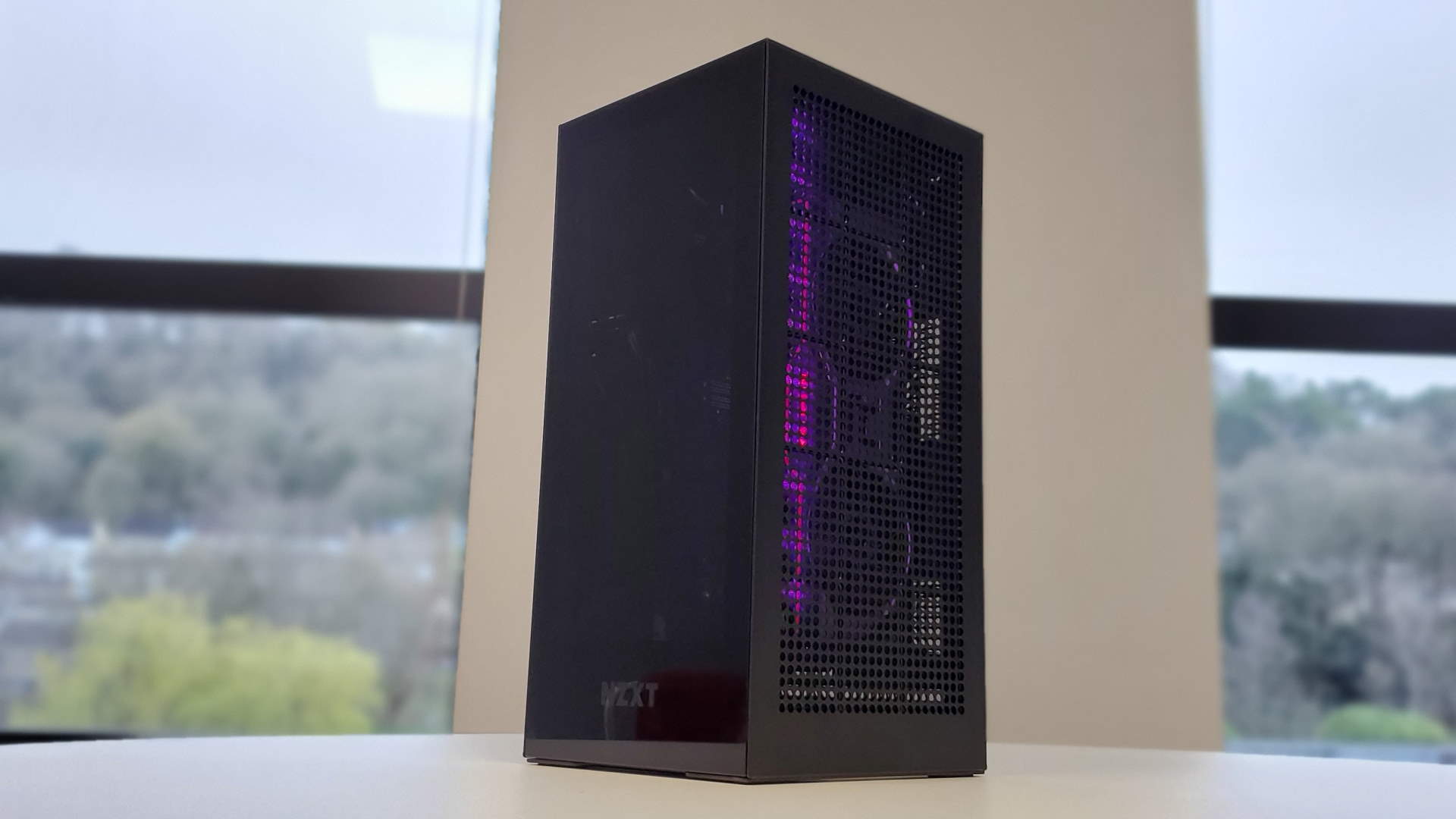

The other big change is one that's tracking the ever rising power demands of both CPUs and GPUs, by shifting from a 600W 80-Plus power supply to a 750W Gold version. It's also had a slight facelift, which means the glass front has much less of a steel ring around it, and is almost bezel-less. And you get an extra USB 3.2 Gen 1 Type-A port on the top, too.
In all, NZXT has made many welcome improvements to what was already a very good mini-ITX chassis design—well-documented riser issues aside. I get that the $400 price tag will sting for a lot of people, but 750W SFX power supplies don't come cheap, and nor do AIO coolers that would squeeze into something so relatively small.
Which all makes the H1 V2 not just a good small form factor chassis, but a really great platform from which to build the mini-ITX chassis of your dreams. So long as those dreams don't include overly tall sticks of memory.
It's a lot of money if you're thinking about it as just a chassis, but with a bundled 750W PSU, liquid cooling, and routed cabling, it's your best bet for a quality minimal fuss, mini-ITX gaming PC build.

Dave has been gaming since the days of Zaxxon and Lady Bug on the Colecovision, and code books for the Commodore Vic 20 (Death Race 2000!). He built his first gaming PC at the tender age of 16, and finally finished bug-fixing the Cyrix-based system around a year later. When he dropped it out of the window. He first started writing for Official PlayStation Magazine and Xbox World many decades ago, then moved onto PC Format full-time, then PC Gamer, TechRadar, and T3 among others. Now he's back, writing about the nightmarish graphics card market, CPUs with more cores than sense, gaming laptops hotter than the sun, and SSDs more capacious than a Cybertruck.
